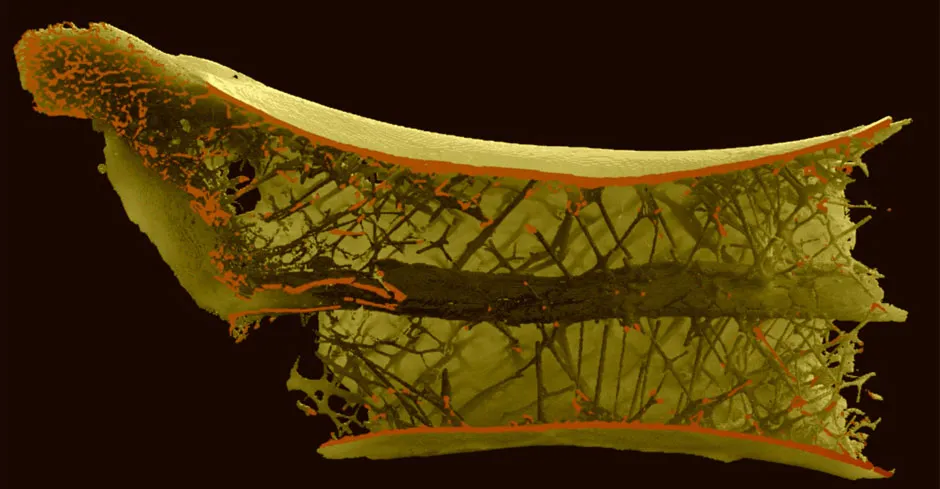Unless they’re keeping it very well hidden, giraffes aren’t known for their flying prowess. However, extinct azhdarchid pterosaurs, gigantic lizards with longer necks and even larger heads, could take to the air.
Yet, exactly how has been a long-standing mystery. Despite having a wingspan of up to 12m, palaeobiologists have wondered how this close cousin of the dinosaur could be lightweight enough to fly and have bones strong enough to support their 2.5m-long necks.
Fortunately, a new study may have solved the puzzle. While researchers previously presumed the bones in the lizard’s neck had a simple tube-within-a-tube structure, CT scans of pterosaur bones revealed their vertebrae had a unique internal construction mirroring the spokes of a bicycle wheel.
Scans showed the bones contain a number of thin rod-like tissues (known as trabeculae) that are arranged in the shape of a corkscrew – and even cross over another.
This strong and lightweight network of trabeculae explains how the pterosaurs could fly and move their massive 1.5m-long heads without snapping their necks (which are described as “ridiculously long” by study first author Cariad Williams, PhD student at the University of Illinois at Urbana-Champaig).
In fact, further analysis revealed that few as 50 of the spoke-like trabeculae increased the amount of weight their necks could carry without buckling by 90 per cent.

“What was utterly remarkable was that the internal structure was perfectly preserved,” said study co-author Professor David Martill.
“As soon as we saw the intricate pattern of radial trabeculae, we realized there was something special going on. As we looked closer, we could see that they were arranged in a helix travelling up and down the vertebral tube and crossing each other.”
While existing at the same time, pterosaurs are not classified as dinosaurs, evolving on a separate branch of the reptile family tree. The pterosaurs first appeared during the Triassic period, 215 million years ago, and thrived for an estimated 150 million years before going extinct alongside the majority of dinosaurs.
Reader Q&A: Why aren’t pterosaurs classed as dinosaurs?
Asked by: Neil Black, Sheffield
Pterosaurs (flying prehistoric reptiles) and dinosaurs (also reptiles) share a common reptilian ancestor that lived some 240 million years ago, but the two groups then followed different evolutionary paths.
Dinosaursare characterised by distinctive features of the skeleton, including a window-like opening in the pelvis where the thigh bone connects. Pterosaurs don’t have this joint, and they have their own unique features such as extra-long fourth fingers that support their wings. Pterosaurs are no more dinosaurs than we are chimpanzees.
Read more: